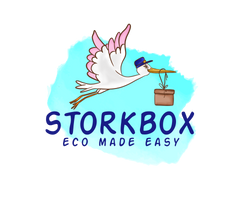As more parents become conscious of their environmental impact, the demand for eco-friendly nappies has grown. However, not all products labeled as “green” or “biodegradable” are truly sustainable. Some brands engage in greenwashing—making misleading claims about their eco-friendliness—so it’s important to know what to look for when choosing the best sustainable nappies for your baby. Here are five key factors to consider:
1. Biodegradability and Compostability
One of the most important features of an eco-friendly nappy is its ability to break down naturally. Traditional disposable nappies can take up to 500 years to decompose in landfills due to their plastic content. In contrast, biodegradable nappies are designed to decompose much faster. Look for products that are certified biodegradable and, ideally, compostable.
-
Biodegradable nappies break down over time but may still contain small amounts of plastic.
-
Compostable nappies fully decompose in the right conditions, leaving no harmful residues.
Check if the brand provides clear guidance on disposal methods and whether they have been tested under composting conditions.
2. Plastic-Free and Sustainable Materials
Many mainstream nappies contain layers of plastic, derived from petroleum, which contributes to landfill waste and pollution. A truly eco-friendly nappy should be made from sustainable, plant-based materials such as:
-
Bamboo fiber (highly renewable and naturally antibacterial)
-
Organic cotton (soft, breathable, and chemical-free)
-
Cornstarch-based linings (biodegradable alternative to plastic)
The fewer synthetic materials used, the better for both your baby and the environment.
3. Non-Toxic and Chemical-Free Composition
Your baby’s skin is delicate, and many conventional nappies contain chemicals that can cause irritation or allergic reactions. Eco-friendly nappies should be free from harmful substances such as:
-
Chlorine (used in bleaching, which can produce toxic dioxins)
-
Fragrances and dyes (which may contain allergens or toxins)
-
Phthalates (linked to hormone disruption)
Look for nappies that are certified as toxin-free and dermatologically tested for safety.
4. Ethical and Sustainable Production
Sustainability isn’t just about materials—it’s also about how a product is made. Check if the brand follows ethical manufacturing practices, including:
-
Using renewable energy sources in production
-
Ensuring fair wages and working conditions for factory employees
-
Offsetting carbon emissions through sustainable initiatives
Brands that prioritize transparency in their supply chain often display eco-certifications such as FSC (Forest Stewardship Council) or Fair Trade labels.
5. Packaging and Waste Reduction
A truly sustainable brand considers not only the product itself but also its packaging. Many nappy brands still use plastic packaging, contributing to unnecessary waste. Instead, opt for brands that use:
-
Recyclable or compostable packaging
-
Minimal or plastic-free wrapping
-
Bulk or subscription options to reduce packaging waste
Final Thoughts
Choosing an eco-friendly nappy goes beyond a “green” label—it requires understanding the materials, disposal process, and ethical values behind the brand. By considering these five key factors, you can make an informed choice that benefits both your baby and the planet. Always look for transparency in a brand’s claims, and when in doubt, opt for certified products that align with your sustainability goal

